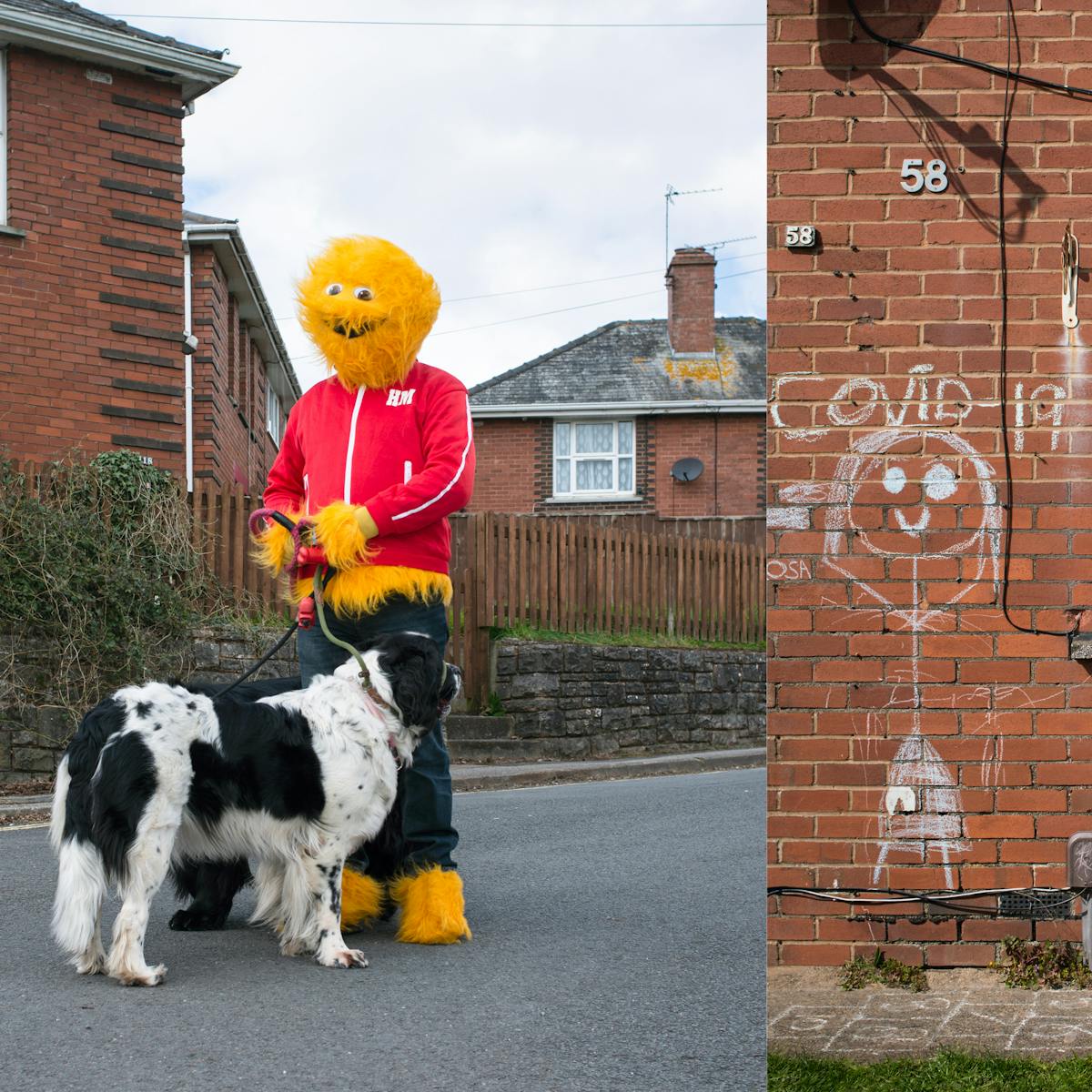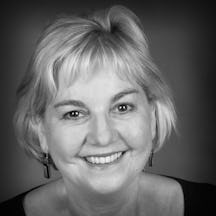Isolated from her partner and friends due to the coronavirus outbreak, Michelle Sank’s daily walk takes her round the streets near her home in Exeter. Here her words and images give glimpses into lives continuing under the shadow of COVID-19.
Since 16 March 2020 I have been isolating from both my partner and my social group, and as a way of dealing with the situation, I decided to document how people are negotiating private and public spaces during the COVID-19 outbreak. I worked within the areas of Burnthouse and Glasshouse Lanes in Exeter, which are where I take my daily walks.
I have been drawn to how people of all ages are adapting to this new way of being, and how their relationships to each other and to the spaces themselves are unfolding. There has been a real sense of wonderment in these chance encounters, which often occur in moments of absolute quiet and solitude. Hearing people’s experiences has added another level of understanding and poignancy to the evolving story of my local area.
Working with this new physical distance, of which I’m constantly mindful, has challenged my photographic practice. Being that bit further away has resulted in a new methodology, where the individual and surrounding background work together in a closer way.
Alongside the people, the house facades and accompanying objects I’ve discovered have taken on a new sense of relevance. Although these pairings of people with spaces are not directly connected, they help me to give additional meaning to the portraits and the period we’re living through. Religious icons, empty chairs and floral memorials have all become symbolic references to both the presence and fragility of life and death in these unsettling times.
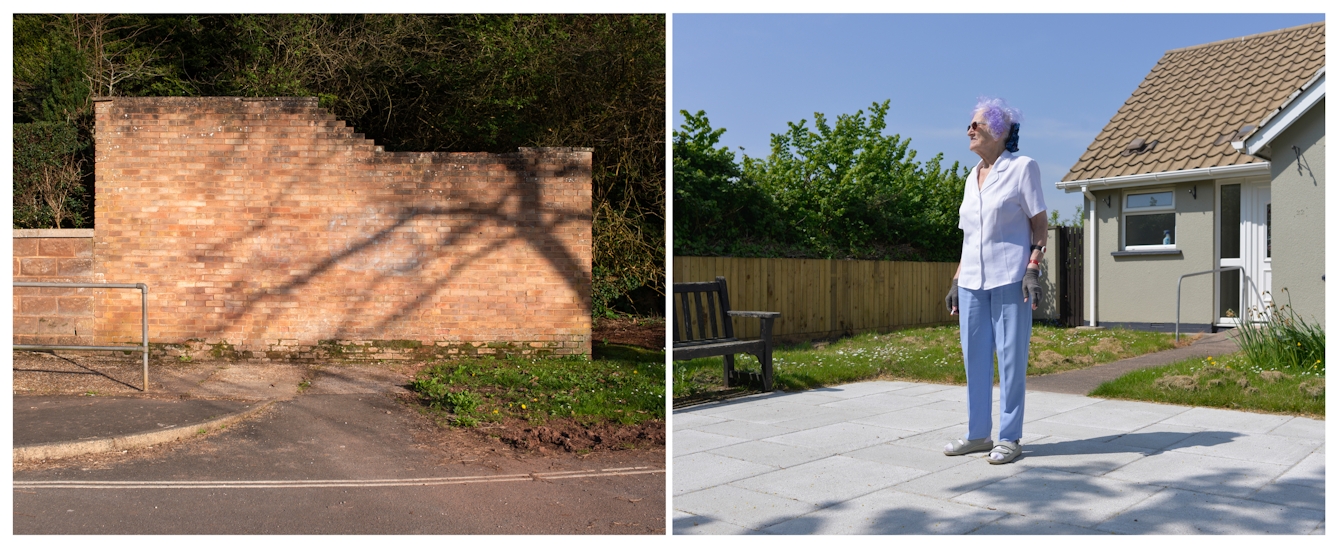
23/04/2020 12:35pm
Rona is 88 years old and when I came across her she told me that it was the first time she had been out of her flat in six weeks. She was reading a women’s magazine on a bench. I admired her elegance and poise and she told me she had been a model – in fact, a ‘mother of the bride’ model for a well-known shop in Exeter. She had suffered a heart attack when she was in her 50s and after that had become a long-distance walker. She has to be really careful now with COVID-19 and therefore doesn’t venture out much, but fortunately has a daughter who lives locally and brings her food.
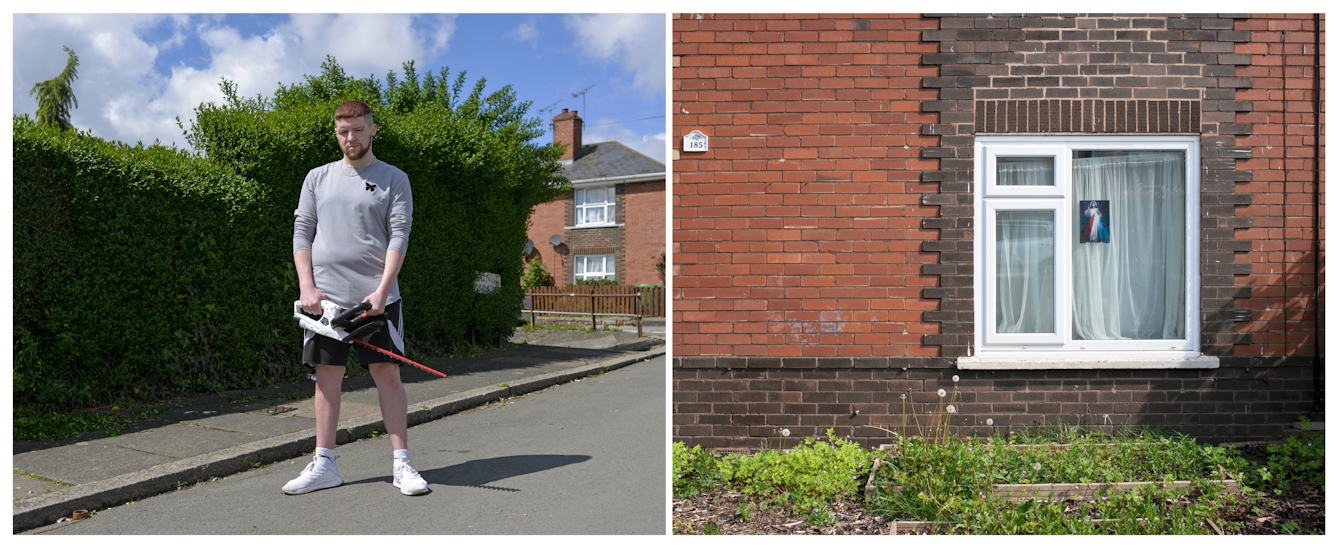
01/05/2020 12:13pm
Kyle has cystic fibrosis. His job is in a packing warehouse, but as he is very vulnerable he cannot be at work. His mother said they had moved down to this area in the South West as it was better for his health. I remarked that he looked very well and he said that his mother makes sure to look after him and prepare healthy food. He felt frustrated at the moment with the lack of structure in his life because of the virus, and didn’t know when he could return to work.
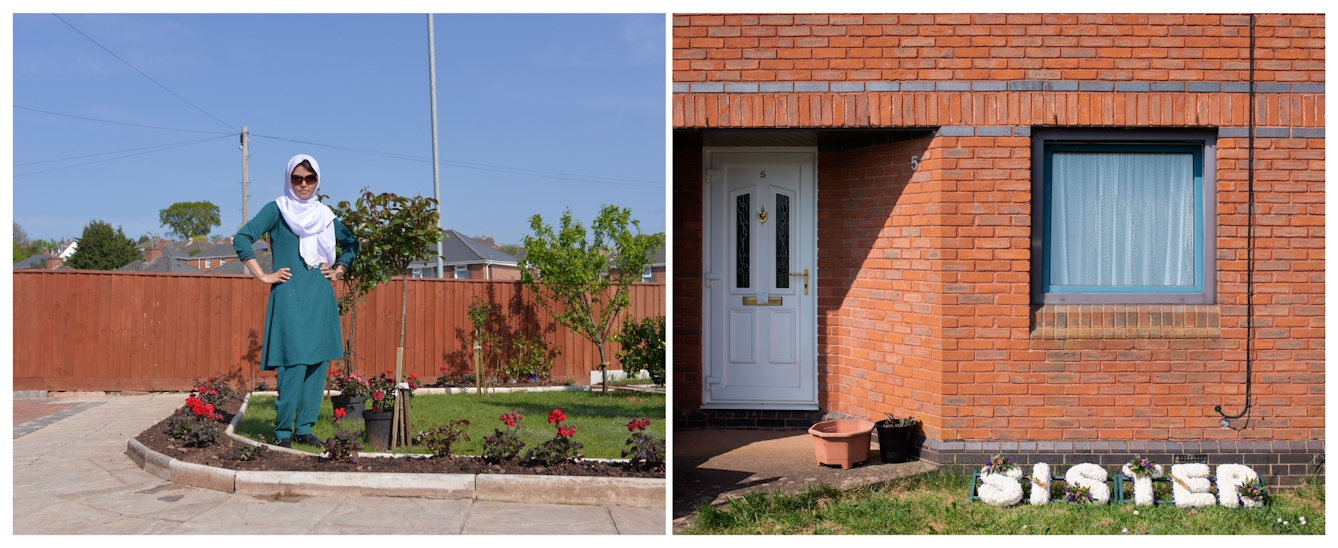
22/04/2020 4:06pm
I had passed this garden many times on my daily walk but had never seen anyone in it until the day I took this image. It had always struck me as being different from the other houses in terms of the flowers, the colours and the design. Rahila was outside with her father-in-law, and told me they had come from Afghanistan seven years before to live in this neighbourhood. I asked her if she had acclimatised and if she felt integrated in the community. She said she did, and that her husband is a taxi driver but now, with coronavirus, the situation is difficult for them all in terms of work and going out.
This floral tribute had been placed in front of a house that is now unoccupied. The death was not coronavirus-related, but the wreath seems to symbolise the loss so many people are now experiencing on a daily basis.
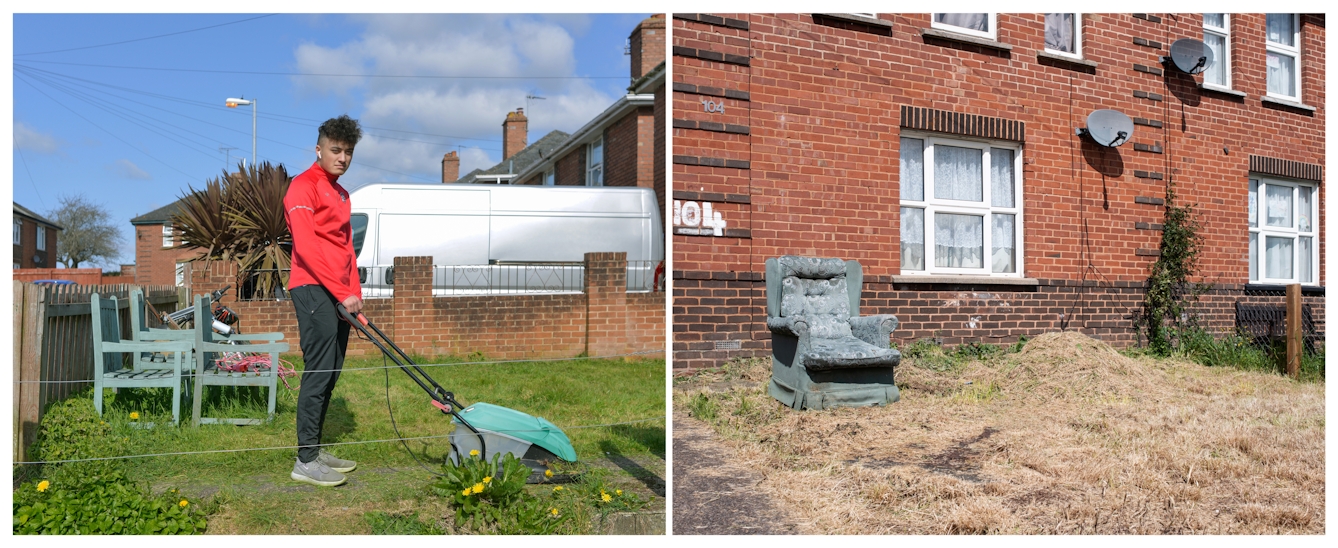
28/03/2020 3:20pm
It was while walking around the area that I found this young man with his brother and mother. His fashionable dress and demeanour felt quite incongruous in relation to the task that had been set for him. They found it amusing that I wanted to photograph him doing this – a moment of normality for us all during the crisis. The symbol of the wire fence becomes an important metaphor for the line between private and public spaces during COVID-19.
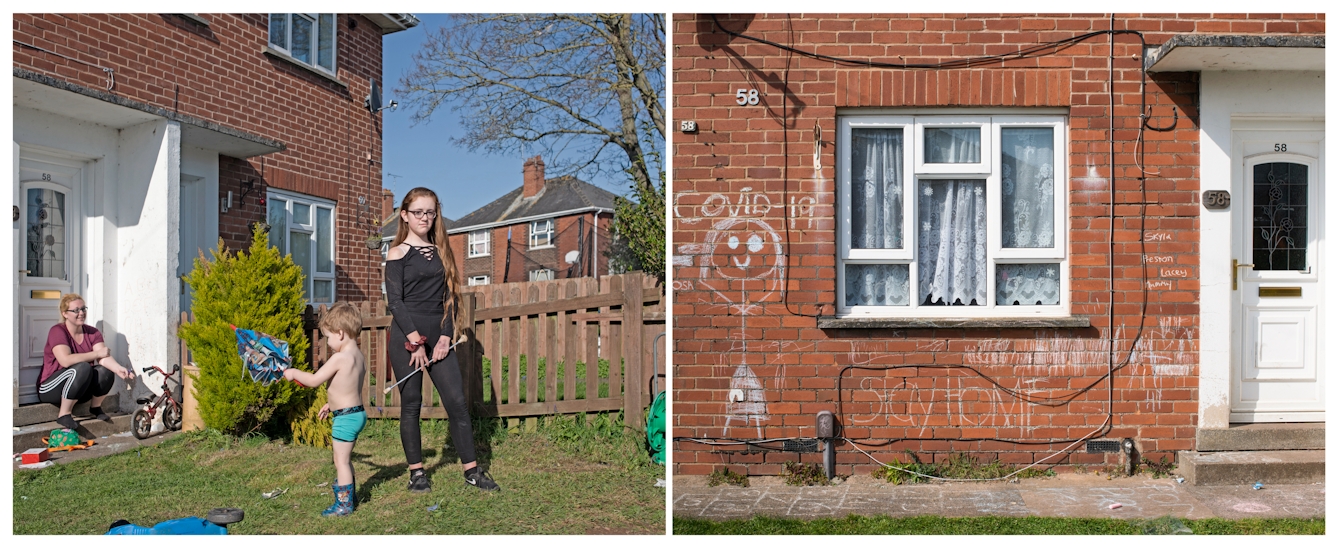
22/03/2020 6:19pm
I came across Lacey and her family in their front garden during the early stages of self-isolation. Her young brother was thought to have shown signs of coronavirus at his nursery, so they had been at home for a week at that time. Her mother said she found the confinement really challenging with the two children in the house. Lacey was enjoying practising her dance routines outside. When I went to deliver them their photograph a week later, I could hear dance music coming from the house and Lacey once again practising indoors.
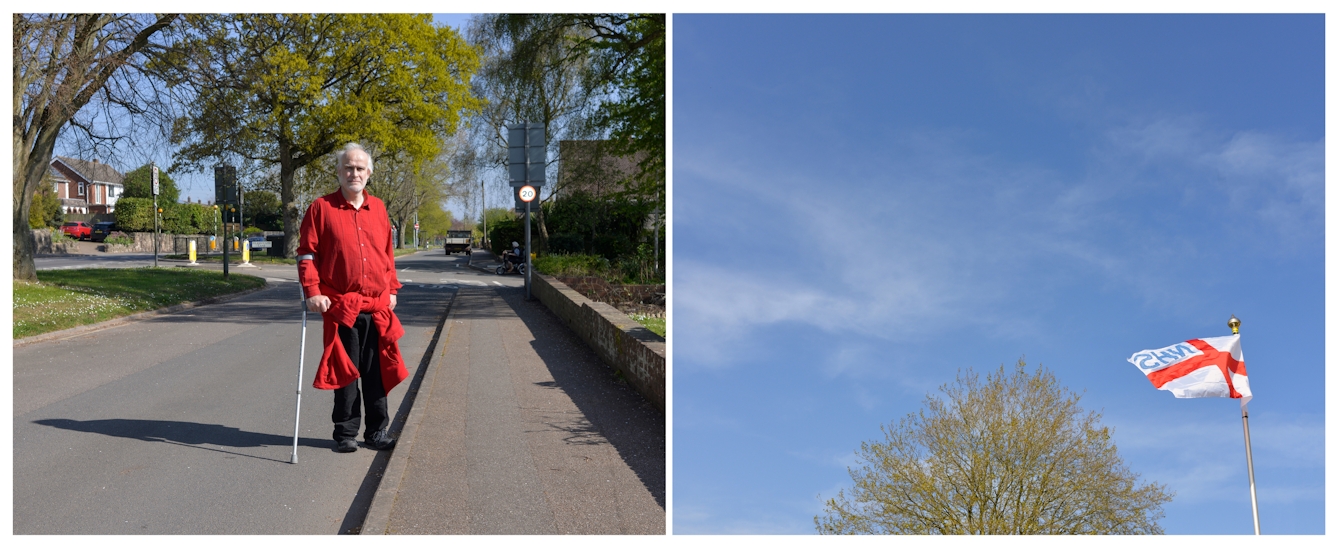
16/04/2020 3:59pm
I met Clive on the street, and there was a marked contrast for me between the energy of his red clothing and what appeared to be considered strain in his movement. He told me he had just had an operation and was living with his brother in a house along that road. When I encountered him he had just completed 10,000 steps, shuffling one foot at a time. His fortitude seemed extraordinary, and mirrored the inner strength we all need to cope in this era of COVID-19.
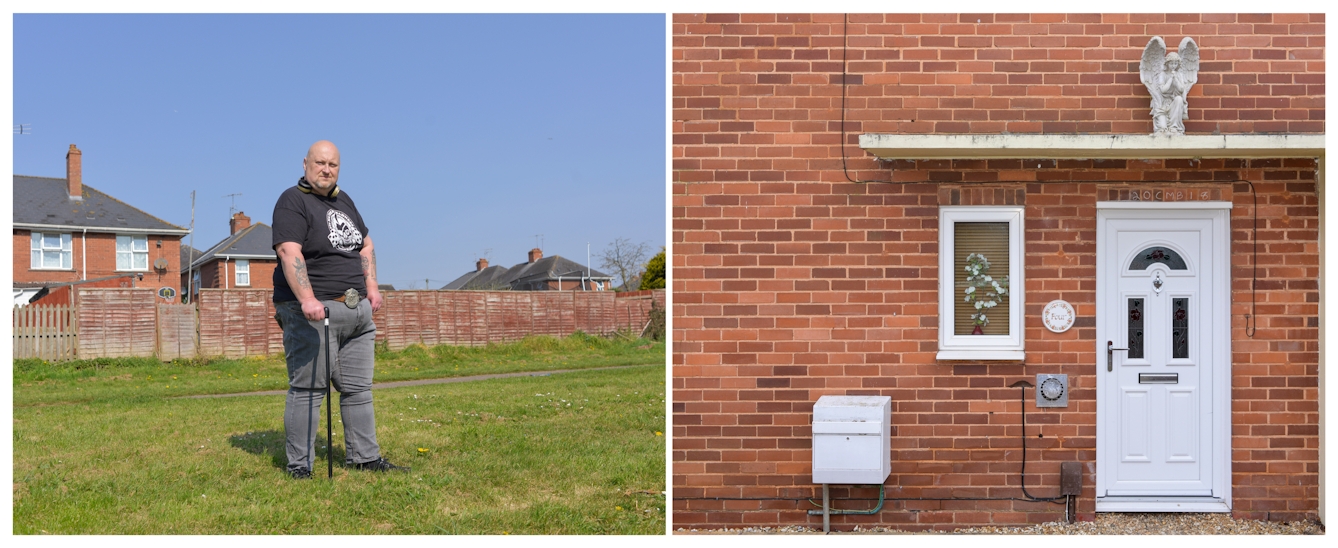
10/04/2020 11:08am
I had photographed Dave 12 years ago in the same location but had never seen him again until this day. He remembered me, and the photograph I had taken of him with his dog. He told me he had been suffering from cancer then and was now in recovery, but that sadly his dog had died. I asked him how he was managing and he said his rock music is a great comfort and keeps him busy. I found the old image of him with his dog, which I delivered together with this one from our new encounter.
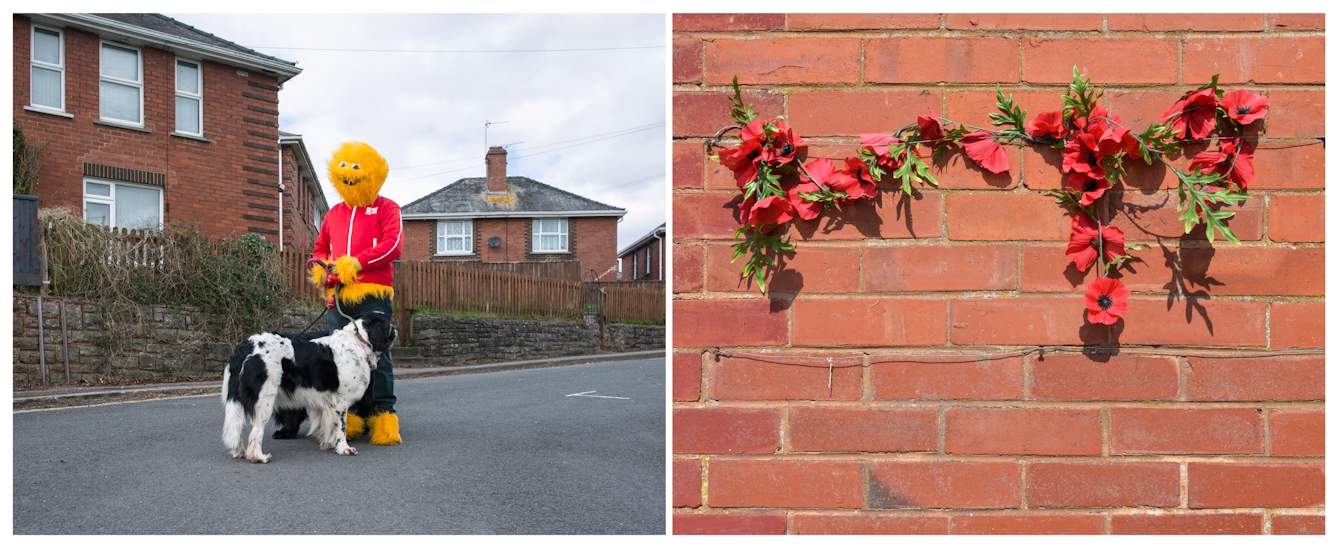
31/03/2020 12:35pm
I saw this vision approaching from a distance and was quite amazed at what was becoming apparent as he came closer. He told me that every day he goes out to walk his dogs for his permitted outing, and as part of this routine he wears a different costume. He said that this cheered things up for him and everyone in what was a very difficult situation. I was intrigued to see what he really looked like, but he declined to take off the head apparel, telling me he didn’t look good at all in reality.
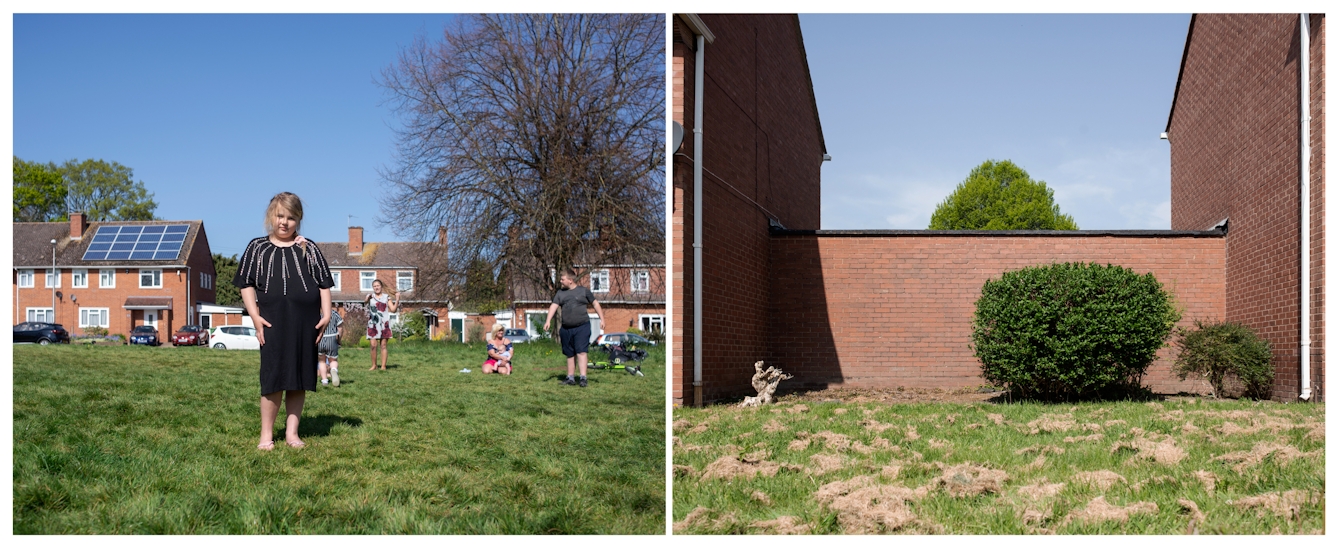
13/04/2020 2:57pm
On one of my daily walks I came across a Romany Gypsy encampment on the community grass area and asked if I could take some photographs. I was interested in how they were managing in isolation, and the grandmother said to me, “If God wants to take you, He will, and there is nothing you can do.” The young girl in the image went into her caravan to put the dress on especially for the photograph. I managed to take prints to them before they were moved on to another area by the local council.

22/03/2020 4:47pm
I found this young girl with her family – she was there with her two brothers, her mother and her grandfather. She was entranced by the kite and the struggle her grandfather was having to get it to fly continuously. When I captured this it felt like there was some hope and joy despite the darkness of the current climate. I asked her mother how they were coping, and she said she was finding it difficult managing with all the children, but she was doing okay.
About the photographer
Michelle Sank
Michelle Sank is a South African-born documentary photographer who lives in the UK. Her work explores contemporary social issues. Her photographs have been exhibited and published worldwide, and have won awards in prestigious competitions, including those run by the National Portrait Gallery and the British Journal of Photography. The most recent of her four books is ‘My.Self’, commissioned by Multistory, about cultural identity amongst diverse young people in the Black Country.
